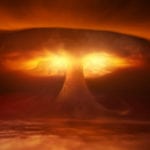 Movies and TV
Movies and TV  Movies and TV
Movies and TV  History
History 10 Things You Didn’t Know About the American National Anthem
 Technology
Technology Top 10 Everyday Tech Buzzwords That Hide a Darker Past
 Humans
Humans 10 Everyday Human Behaviors That Are Actually Survival Instincts
 Animals
Animals 10 Animals That Humiliated and Harmed Historical Leaders
 History
History 10 Most Influential Protests in Modern History
 Creepy
Creepy 10 More Representations of Death from Myth, Legend, and Folktale
 Technology
Technology 10 Scientific Breakthroughs of 2025 That’ll Change Everything
 Our World
Our World 10 Ways Icelandic Culture Makes Other Countries Look Boring
 Misconceptions
Misconceptions 10 Common Misconceptions About the Victorian Era
 Movies and TV
Movies and TV The 10 Coolest Stars to Set Sail on The Love Boat
 History
History 10 Things You Didn’t Know About the American National Anthem
 Technology
Technology Top 10 Everyday Tech Buzzwords That Hide a Darker Past
Who's Behind Listverse?

Jamie Frater
Head Editor
Jamie founded Listverse due to an insatiable desire to share fascinating, obscure, and bizarre facts. He has been a guest speaker on numerous national radio and television stations and is a five time published author.
More About Us Humans
Humans 10 Everyday Human Behaviors That Are Actually Survival Instincts
 Animals
Animals 10 Animals That Humiliated and Harmed Historical Leaders
 History
History 10 Most Influential Protests in Modern History
 Creepy
Creepy 10 More Representations of Death from Myth, Legend, and Folktale
 Technology
Technology 10 Scientific Breakthroughs of 2025 That’ll Change Everything
 Our World
Our World 10 Ways Icelandic Culture Makes Other Countries Look Boring
 Misconceptions
Misconceptions 10 Common Misconceptions About the Victorian Era
10 Catalysts for World War Three
So often during the 1980s we all felt on the brink of a third world war – most likely nuclear in nature. With the nineties, the idea waned a little but with all of the unrest happening in the Middle East over the last year or so the possibility returns again more strongly to our mind. This list looks at ten potential causes for a third world war.
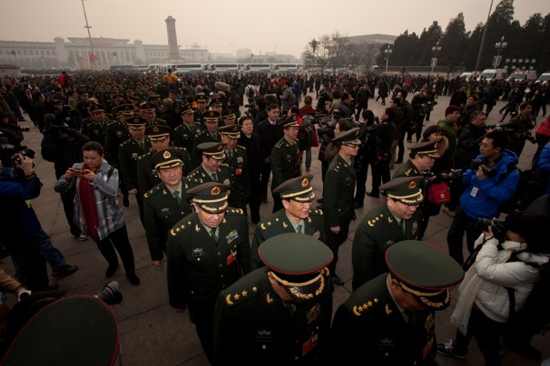
Cause: China Attacks a United States Ally
All nations with democratic governments are U. S. allies, to one degree or another. When Communist North Vietnam invaded Democratic South Vietnam, the United States’ involvement in the Vietnam War escalated to full-scale land and air engagements versus the North Vietnamese Army and the Viet Cong. This was because the U. S. had pledged its support to any democratic nation under attack by different foreign governments, especially Communism.
China firmly supported North Vietnam and supplied them with men and material. This was the primary reason why the question, “Can’t we just nuke Hanoi?” was answered with an emphatic “No.” China was Communist and technically acquired the bomb in 1964, but the number of their nuclear weapons was very low throughout the Vietnam War, probably less than 10. Unfortunately, they were firmly supported by the Communist Soviet Union, which had over 10,000.
Today, China is much more friendly with the U. S. and is not supported by a Communist country to its north. But China’s government has never spoken much in favor of the 14th Dalai Lama. Ever since 1950 when the brand new People’s Republic of China wanted to annex Tibet as another Chinese province, the Dalai Lama has voiced his opposition to such a move, and as such, since 1959, he has lived in exile in India and attempts to run the Tibetan government from there.
China has demanded that no nation grant the Dalai Lama shelter, and that India extradite him to China for prosecution on a charge of insurrection. To date, India refuses. This is just one example of what could happen. There is no imminent threat of a Chinese invasion of India to capture the Dalai Lama, but if the U. S. economy were to become much worse than it is, and it owed even more money to China, China might someday deem the U. S. less able or less likely to retaliate in India’s defense. This would never be true, but if China makes the first move, India cannot be guaranteed to refrain from using nuclear weapons, which would certainly result in China’s use of theirs, and then the United States’ use of theirs.
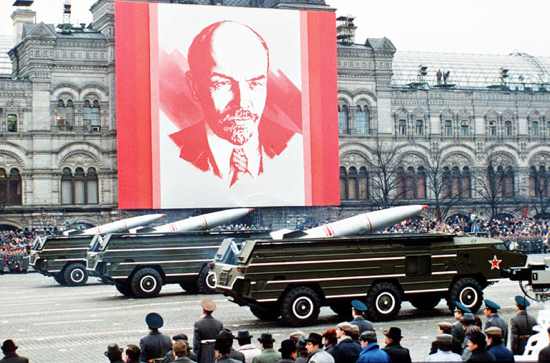
Cause: Russia Nukes The United States of America
The ultimate Cold War fear always began with the Soviet Union launching multiple ICBMs (intercontinental ballistic missiles) armed with nuclear warheads at various military targets in the United States. The prime targets were Washington D. C.; NORAD near Colorado Springs; military bases like Fort Bragg, NC; Camp Pendleton, GA; Parris Island, SC; and various ICBM silos in the middle of nowhere all over the country. The Soviets claimed that they never considered major urban areas like New York City to be of any military value as targets, and would only have been targeted out of desperation in the event of mutual nuclear attacks. Once the first missiles were launched, the Soviet Union planned to invade East Germany, destroy the Berlin Wall, and conquer Western Europe.
The Soviets explored over 300 scenarios involving different missile targets, location, timing, and speed of land invasions, including options for the final conquest of the United States, and claimed after 1991 that their only non-diplomatic deterrent to nuclear war was their inability to eradicate the United States’ armed civilian population. Carpet nuking the entire continent would ruin its natural resources.
Today, Russia and the U. S. are on fairly friendly terms, but General Secretary of the United Russia, Vladimir Putin, is not universally trusted or even liked in the U. S., and although it is generally believed that he would never initiate nuclear war against the U. S., there is always a lingering fear throughout the world of another coup d’etat in Russia. They had many throughout history, and almost every time, the entire country’s economy collapses, leading to anarchy. Putin is despised by a large portion of Russia’s population, led famously by former World Chess Champion Garry Kasparov, who has been beaten and/or imprisoned on numerous occasions merely for demanding the right to free speech. Should another coup take place, Russia’s new leader may well turn his sights onto the United States.
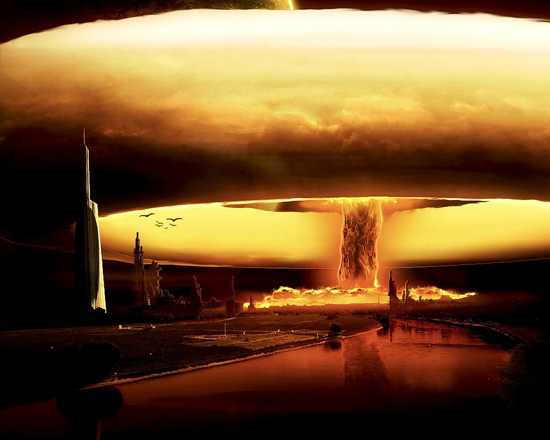
Cause: A Rogue Nuke Blamed on Russia
Even scarier than Russia obviously attacking the U. S. is the more likely scenario of parties of another country, probably one of the former Soviet Republics, finding or stealing a nuclear bomb from Russia’s stockpile and sneaking it into the United States. The likelihood of a nuclear missile successfully breaching the U. S. air defenses, headquartered at NORAD, Colorado, is quite low. The U. S. does have defensive capabilities to thwart such attacks, but cannot, as evinced by 9/11, be guaranteed to anticipate or prevent attacks based on espionage or stealth insurgency.
It would be very easy for one of Russia’s long lost warheads to fall into the wrong hands, by discovery or sale, and wind up in a major American metropolitan area. Even the smallest practical yield for a fission bomb, similar to the M388 Davy Crockett, would equal about 20 tons of TNT, and if placed inside the White House, would obliterate the White House, the Executive Office Building, and the U. S. Treasury, and every person inside them. This “backpack nuke” scenario was used for the plot of Tom Clancy’s “The Sum of All Fears,” though the backpack would be large enough to arouse suspicion. Hidden in a vending machine, it would probably be unnoticed until detonation. If this scenario were to happen, the U. S. would quickly learn the origin of the fissile material, blame Russia, and Russia would have a hard time convincing the U. S. otherwise.

Cause: Terrorists Bomb Vatican City
The Vatican is a prime target for anti-Christian or anti-Catholic extremists of all kinds. Its security is extremely tight. The Pope is, at all times, surrounded by over a dozen armed bodyguards, in addition to the Swiss Guard. But the backpack bomb scenario might succeed, if a terrorist bent on suicide were to enter St. Peter’s Square during any church service, especially Christmas or Easter Mass. At that time, the Square is crowded with as many as 125,000 people. When a new Pope is installed, the crowd can number 200,000, spilling out along the Via della Conciliazione, the main road up to St. Peter’s Basilica.
The Tomb of St. Peter himself lies beneath the floor of the center of St. Peter’s Basilica, which was designed by a number of immortal Renaissance men, including Michelangelo. The Sistine Chapel stands recessed between the Basilica and the Pope’s living and working complex.
The Pope lives in the Papal Apartments, on the third floor of the Apostolic Palace, on the north side of the Square, from one of the windows of which the Pope appears every Sunday morning to bless a crowd of rarely less than 15,000. But however tight the security of Vatican City is, the Square covers 6 acres, while the whole of the City covers 110 and is walled off from Rome, and it is designed to appear welcoming, for visitors to enter easily. It employs gates, guards, and security cameras that cover every spot of the Square, and anyone carrying a large backpack is certain to be stopped for inspection.
But there is a commercial bus line that transports tourists into the Square, and it would be frighteningly easy for a terrorist, especially one bent on suicide, to commandeer one of these buses somewhere in Rome, fill it with ammonium nitrate fertilizer, liquid nitromethane, and to vex, which is a mixture of ammonium and methyammonium nitrates, and head for the Vatican. These are the materials Timothy McVeigh and Terry Nichols amassed and used to bomb the Alfred P. Murrah building in Oklahoma City.
A bus carrying 7,000 lbs of this material could easily bash through the wrought iron gates into St. Peter’s Square, and be driven full speed into the Apostolic Palace. To assassinate the Pope is a public dream of many a terrorist around the world, and such a bomb would also destroy a huge amount of immortal art, architecture, and history. Italy would definitely retaliate after discovering the crime’s origin and masterminds. Then, once again, Christianity would be at open war with Islam, and any Islamic nations that support the crime would fight against most of the rest of the world.
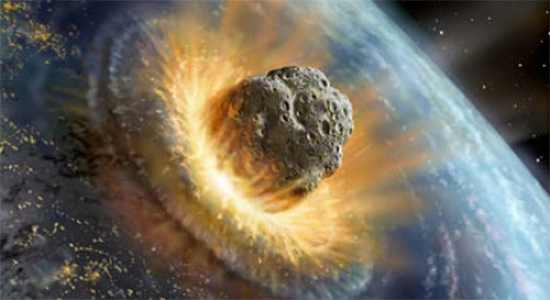
Cause: Meteor Impact
The one eventuality for which no one can prepare, which no one can prevent. Scientists have theorized that had a meteor entered Earth’s atmosphere and traveled over any area of either the United States or the Soviet Union, or any ally, during the Cuban Missile Crisis of 1962, at least one side would have mistaken it for a nuclear missile and launched its own in retaliation. Then both sides would have initiated a nuclear holocaust. We were never closer to our own idiotic annihilation than during the 13 days between October 15 and 27 of that year.
You may be thankful that no meteor was tracked across the sky anywhere on Earth during that time. This is a relatively rare occurrence. Earth is struck each day by a rough estimate of 100 septillion meteors, asteroids and comets, most of them the size of grains of sand. Almost all of them burn to dust in the upper atmosphere. A meteor of about 16 inches strikes Earth about once a day and burns up long before reaching the ground; a meteor of about 12 to 15 feet every year, and one about the size of a house every century. This does not count only those meteors that strike the ground, but includes all objects that enter the atmosphere. Some skip back out of it; most burn up. But if a large meteor enters our atmosphere, it bursts into extremely hot, bright flames, and this fireball, called a bolide, could very easily be mistaken, even on radar screens, for a nuclear missile. Had one entered our atmosphere over a political hotspot in October 1962, it may have been all that was needed to push both nuclear powers over the brink.
The power of a meteor impact is far beyond our poor ability to create. The largest man-made explosion in history was Tsar Bomba, the Soviet attempt to terrify the world. It was a 50 megaton blast in northern Siberia that shattered windows in Finland. That is the approximate yield of a meteor made of nickel and/or iron, the size of the Great Pyramid of Giza. A building this size is thought to be huge, but a natural rock this large is nowhere the size of what we think of as a mountain. And yet for such a comparatively small object to yield 50 megatons of explosive force is astounding. The reason for such an astronomically high amount of energy, potential and kinetic, lies in the extremely hard composition, and in the extremely high velocity. Meteors average a speed of about 92,500 miles per hour, with some traveling as slow as 25,000, some as fast as 160,000. The fastest commercially available bullet is the .223 Winchester Super Short Magnum, which travels at 4,352 feet per second, or 2,967 mph. That 2.6 gram bullet strikes at up to 1,683 foot-pounds of force. Now imagine an iron boulder the size of a small neighborhood traveling 54 times faster when it strikes the ground.
Yet, regardless of whether it strikes, a meteor streaking across the sky can easily be misinterpreted as a nuclear missile attack. It may already have been, on 22 September 1979, when, in the South Atlantic, a satellite detected a double flash of light consistent with a nuclear explosion. No government has ever claimed responsibility for any such test, and while one consensus centers on a joint effort by Israel and South Africa, another consensus is that it was a meteorite briefly entering the atmosphere.
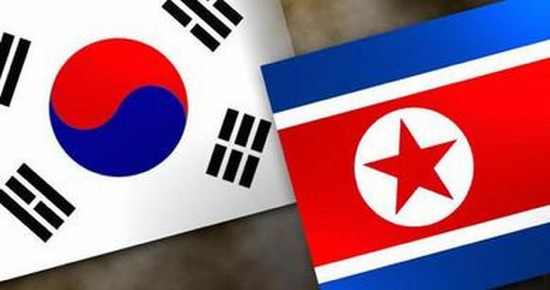
Cause: North Korea Invades South Korea
North Korea is one of the least trusted nations on Earth today. They and South Korea are still officially at war, since neither signed an actual peace treaty in 1953. Both nations claim sovereignty over the entire Korean Peninsula, and relations between them have never been more abysmal. With the death of Kim Jong-il, North Korea has become even more mysterious, since no one in the world abroad knows much at all about his son, Kim Jong-un, except that he appears grossly unqualified to run a country. The Kim family is virtually worshiped by the population, probably by requirement, and in this way the nation is similar to Nazi Germany.
He is only 28 or 29 years-old, the youngest head of state on Earth, and was promoted to Marshal, the highest rank of the North Korean Army, in July 2012. North Korea is so secretive about its activities that not even multinational espionage has been able to ascertain military specifics on what they are up to. They are the newest official nuclear power, having tested a nuclear warhead on 9 October 2006, despite repeated international warnings not to do so.
The most severe breach of the uneasy truce between North and South occurred on 23 November 2010, when South Korea’s navy conducted military exercises around Yeonpyeong Island. This island lies right on the maritime border between the nations, and both claim it. The U. N. granted it to South Korea in 1953. The North Koreans viewed these exercises as an act of aggression and retaliated with an artillery bombardment of the island, which prompted a like response from South Korea.
The North Koreans may have lost 5 to 10 dead, to the South Koreans’ 4, two military, two civilian. The crisis almost brought both countries into open warfare, which South Korea may well have lost on its own. It sports one of the world’s largest reserve armies, with 8,000,000 inactive soldiers supporting 687,000 active. North Korea’s is even larger, with over a million active, supported by 8.2 million reserves. Either nation’s total army, including reserves, far outnumbers the United States’.
The only reason war did not break out is because the U. S. immediately sent the USS George Washington Nimitz-class aircraft carrier into the Yellow Sea in open support of the South Korean Navy. This was also intended to warn China not to support its Communist neighbor. The whole incident dwindled to a simmer soon afterward, but it is no secret that North Korea is run not ineptly but maliciously, barbarically, as a totalitarian, Stalinist dictatorship founded on fear, torture, and execution. Its government makes no secret of its hatred of South Korea, the United States, and democracy in general.
The present fear the world over is that the next time the United States of America goes to war, it will most likely do so in response to North Korea’s ultimate land and sea invasion of South Korea, and when that happens, North Korea’s leaders may drop the bomb on Seoul. If America responds even with conventional weapons against military targets, it is quite possible that China, in sworn defense of Communism, will retaliate with nukes against South Korea, since a nuclear missile launched against the U. S. would probably be shot down.

Cause: Syria Invades or Bombs Israel
This entry has much in common with #2. Syria and Israel have been at each other’s throats since the Book of Joshua. Israel does a magnificent job appearing like the sole voice of peace-loving diplomacy in the Middle East, while Syria is currently in a state of civil war and complete anarchy. This last fact is driving force behind the world’s fear of what Syria may try to do to Israel.
Before any invasion of a foreign country can be carried out, one side or the other in Syria must quell the rebellion. The government is led by the Ba’ath Party, under President Field Marshal Bashar al-Assad, whose forces outnumber the rebel Syrian Liberation Army. If Assad were to win and remain in power, there may be an invasion of Israel in the distant future. Assad has made many hateful and threatening remarks about Israel and Jews, and his genocidal actions in multiple towns, especially Hama, has already alienated Syria from the U. N.
The rebels have as yet said very little about Syria’s relationship with Israel. Should they win their civil war, the question will be open as to how Syria’s new government feels about Israel. One or more bombs, however, sneaked into Israel is much more plausible than an invasion. These bombs need not be nuclear to enrage the Israelis and initiate a full-scale war. Syria does not have nuclear capabilities, but can always steal or buy a bomb. But even conventional bombs, on a sufficiently large scale, could provoke Israel invading Syria, and if that happens, most of the Arab nations will join Syria’s side.

Cause: Bombing of the Dome of the Rock
Popularly the most clear-cut scenario for drawing the majority of the world’s nations into open conflict, but a simple truth detracts from how clear-cut it is, namely that the Dome of the Rock is not sacred to just one religion. Islam currently controls it, and any tourist who attempts to enter the shrine carrying a Jewish or Christian Bible is denied entry until the Bible is temporarily confiscated by armed guards.
Inside the building, there is nothing but the floor and a gigantic limestone rock, called the Foundation Stone, in the center, surrounded by a fence. For centuries, Jews were not allowed even to go in, let alone pray facing the rock, and so the practice began of praying to the Western Wall, nearest the shrine. Today, Jews and Christians are allowed in and may pray, but without bibles. The interior is astonishingly beautiful, with non-stop mosaics and decorative stone carvings, as well as verses from the Q’uran.
The Dome of the Rock marks the spot where Jews and Christians traditionally believe Abraham almost sacrificed Isaac to God; it is also on the Temple Mount, where Solomon’s Temple once stood and where Jesus himself preached many times; Muslims believe it is the very spot from which Mohammed sprang into Heaven on a horse and to which he returned. For Jews, it is the most sacred place on Earth, deemed the most likely candidate for the Holy of Holies in the original Temple. A hole drilled into the rock many centuries ago leads into a cave called the Well of Souls.
Thus, while its destruction by any means, whether missile or backpack bomb, would certainly enrage the Islamic world, it would also enrage the other two religions. If it were to be destroyed, all three parties would say, “It’s sacred to us, too. We would never do it.” Regardless, in the wake of the Islamic attack on the American embassy in Benghazi, Libya, on 11 September 2012, the understanding is renewed across the world that many Muslims refuse to tolerate any blasphemy against their religion. Al-Qaeda planned the attack to coincide with the anniversary of 9/11, and the viral video that ridicules Mohammed was for them a happy coincidence.
Were the Dome of the Rock to be destroyed by anyone, for any reason, the entire Islamic world, centered in the Middle East, would explode, and full-scale land invasions, especially of Israel, would occur. Whether nukes would be used is difficult to say, since most of the Islamic nations do not yet have any. But Pakistan has a few.
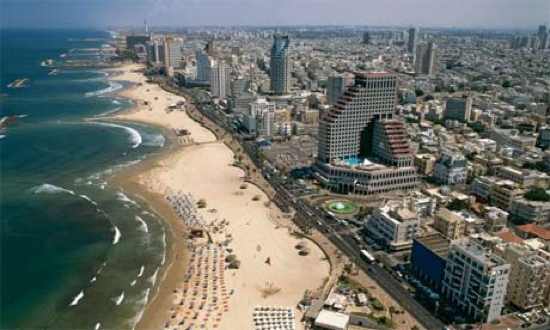
Cause: Iran Nukes Tel Aviv, Israel
During the first Persian Gulf War, Saddam Hussein began launching Scud missiles at Israel, even though Israel had precisely nothing to do with the U. S.-led coalition invading Iraq. 42 missiles struck various parts of Israel, especially Tel Aviv, the country’s most populous city. It was Hussein’s express intent to kill as many Jews as he could before being brought down, and also to entice Israel to join the coalition. His idea was that the rest of the Arab nations would quit, and possibly even attack Israel and the U. S. themselves, because all of them are known to harbor resentment, at the least, of the Jews.
The whole world held their breath in anticipation of the Israelis retaliating, but diplomacy between Israel and its greatest ally, the United States, was prepared for this and Israel was promised that Iraq would pay dearly for Hussein’s barbarism. Israel’s government is an extremely wise one, and they stood down for the war’s entirety. They list 74 civilians murdered by Iraq’s missiles, 72 of them due to heart attacks. The missiles were pitifully inaccurate and did very little damage.
Now consider the ramifications if Iran, which is shortly going to be a nuclear power, should launch a nuclear missile at Tel Aviv, or else sneak one in via backpack or large appliance. There would be no coalition to preserve, and Israel has said many times that if nuclear weapons are ever used against it, it will utterly destroy the aggressor. “Never again” is their motto. They are widely believed to possess 100 to 200 nukes, though they deny having any.
As of this list, Iran probably does not have the bomb, but is believed to be refining uranium and/or plutonium in secret. They also do not have a full understanding of rocketry, which means they would not be able to launch a missile. Thus, for the time being, a backpack nuke seems most likely should Iran initiate hostilities with another nation. If that hostile action occurs, it will be against Israel. Iranian President Mahmoud Ahmadinejad has rarely pulled punches on his hatred of Jews, and anger at the very existence of an Israeli nation. Largely due to him, Iran is not trusted by the U. N., and should proof be found that Iran is attempting to refine uranium, Israel has stated that it will send air strikes to destroy the factories involved.
Iran would not nuke Jerusalem, since it is also sacred to Islam. Should a nuke make it to Tel Aviv, and Iran be found out as the culprit, Israel will not wait for permission from anyone to retaliate, and Syria, at the least, will probably join Iran’s side in the fight. Pakistan may well follow. After that, the whole world may feel a domino effect, as explained below.
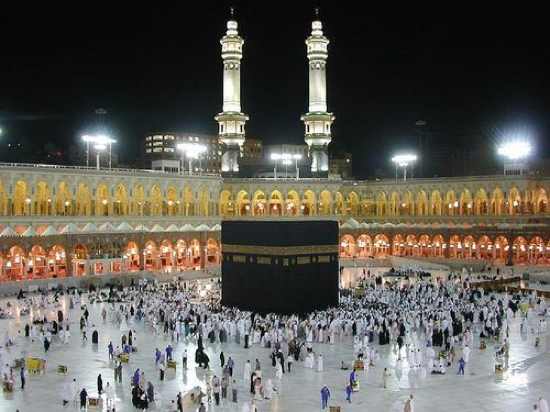
Cause: Bombing of al-Kaaba
Al-Kaaba means “the Cube,” and it is the shrine proper inside al-Masjid al-Haram, the largest mosque in the world, in Mecca, Saudi Arabia. Each year, during the Hajj, up to 6 million Muslims travel to the Kaaba to pray. It is the most sacred spot on Earth to Islam. Muslims believe that it was the first church of any kind to be built anywhere in the world for worshiping a god, the god in question is Allah. Some claim Adam himself built it. Abraham is traditionally believed to have rebuilt it from ruins to the state in which it stands today.
It is made of granite, sits on a marble base, is draped in black silk with Q’uranic verses embroidered in gold and is mostly empty inside: there are three pillars and an altar, and a staircase leading to the roof. Five times a day, Muslims are to pray, and they must face East on their knees, symbolizing that they face the Kaaba. This practice is called the “qibla.”
If any part of the mosque were bombed, but the Kaaba were undamaged, tensions in the Middle East would reach a fever pitch unlike anything yet experienced. All the blame would immediately fall on Israel, because the Jews and Muslims have been at odds for millennia. Islamic terrorists make no secret of their seething hatred for Jews and Christians; since the United States of America, the Christian nation these terrorists hate the most, is too far away for immediate reprisal, Israel would bear the worst, most direct blow. Israel would defend itself and would not need much help doing so.
But there may yet be no world war in response to a bombing of the mosque. Diplomats would earn their money, but the horror could be averted. This is not true if the Kaaba itself should ever be destroyed. Then, there would be war, and Saudi Arabia would be the first belligerent on Islam’s side, Israel the first on Judaism’s side, America the second, in Israel’s defense; then every Islamic nation in the Middle East would besiege Israel, and all those abroad would turn their sights toward whatever Christian shrines and churches they could.
It is likely that Israel would be the first to use a nuke, probably on Tehran, Iran or Damascus, Syria, in order to dissuade or weaken the multinational onslaught. But by then, Muslims’ fury would probably be unbeatable by any means. Pakistan, and possibly India, would retaliate with nukes against Israel, maybe each other, and the nuclear combat would globalize as it is conceivable the United States would launch against Israel’s nuclear enemies. Whether North Korea, China, or Russia would become involved is a difficult question, but should it happen, North Korea would be first to escalate the conflict by launching against either the U. S. or South Korea; the latter would respond against North Korea, drawing China into a defense of Communism.



